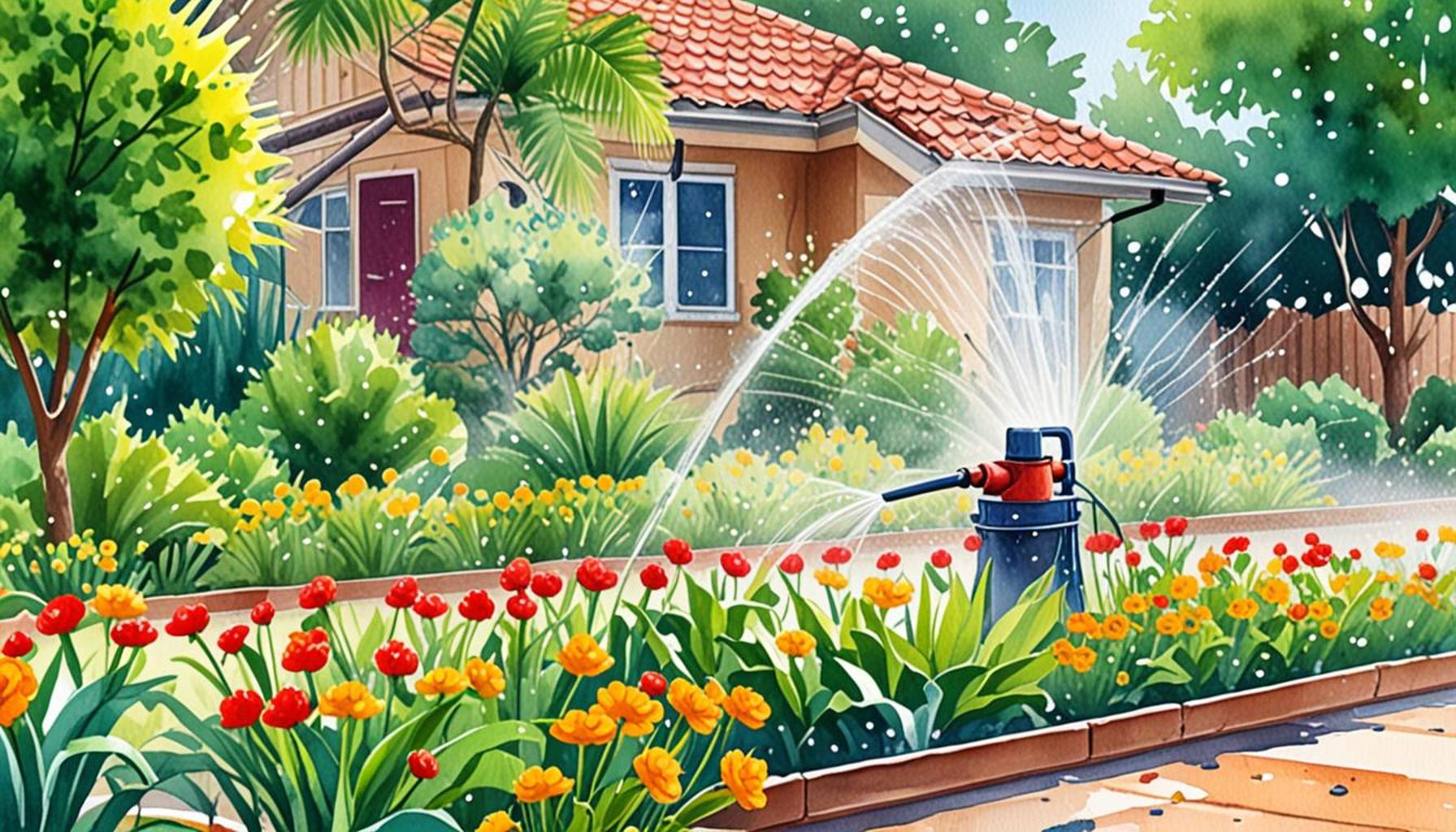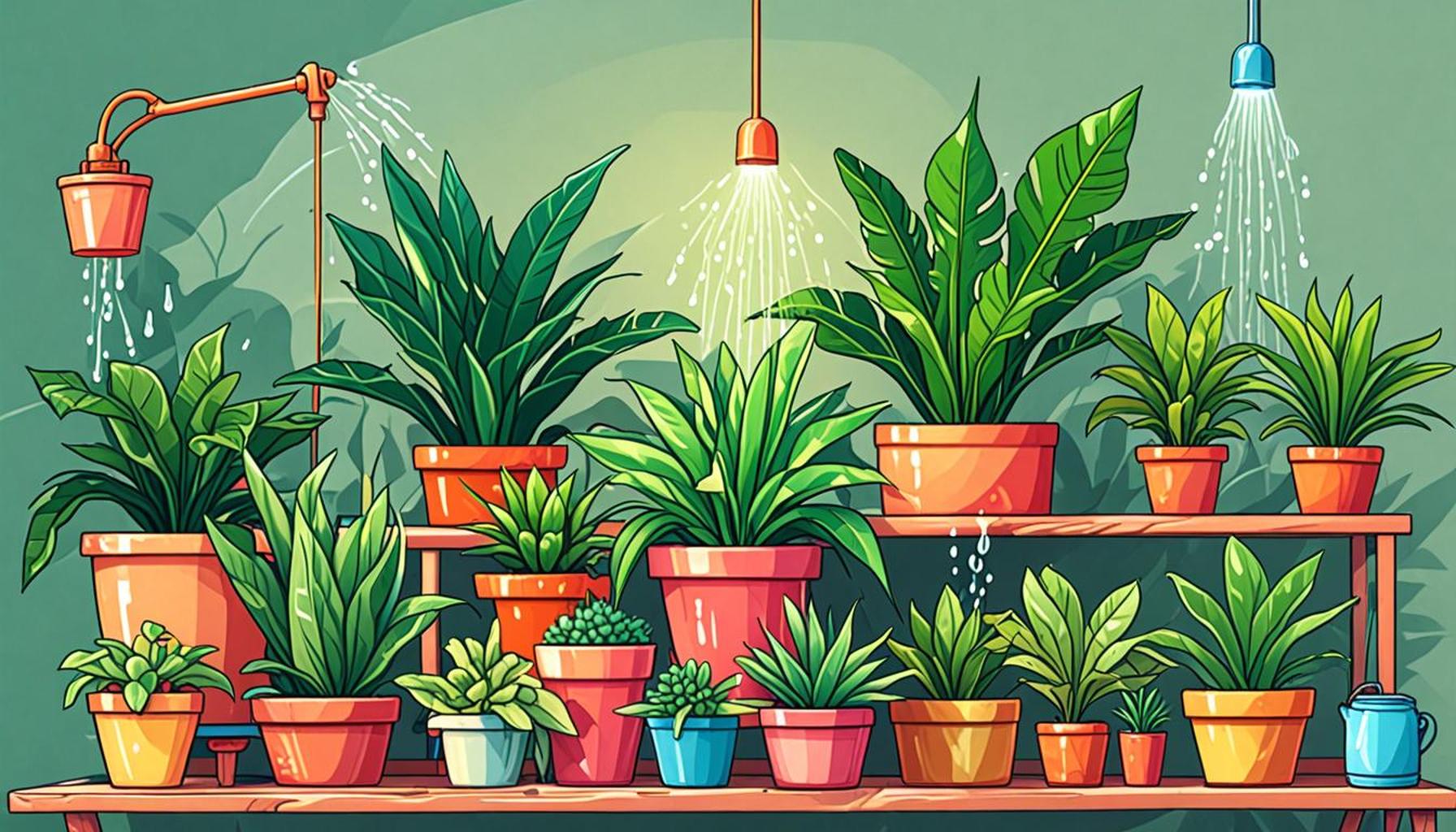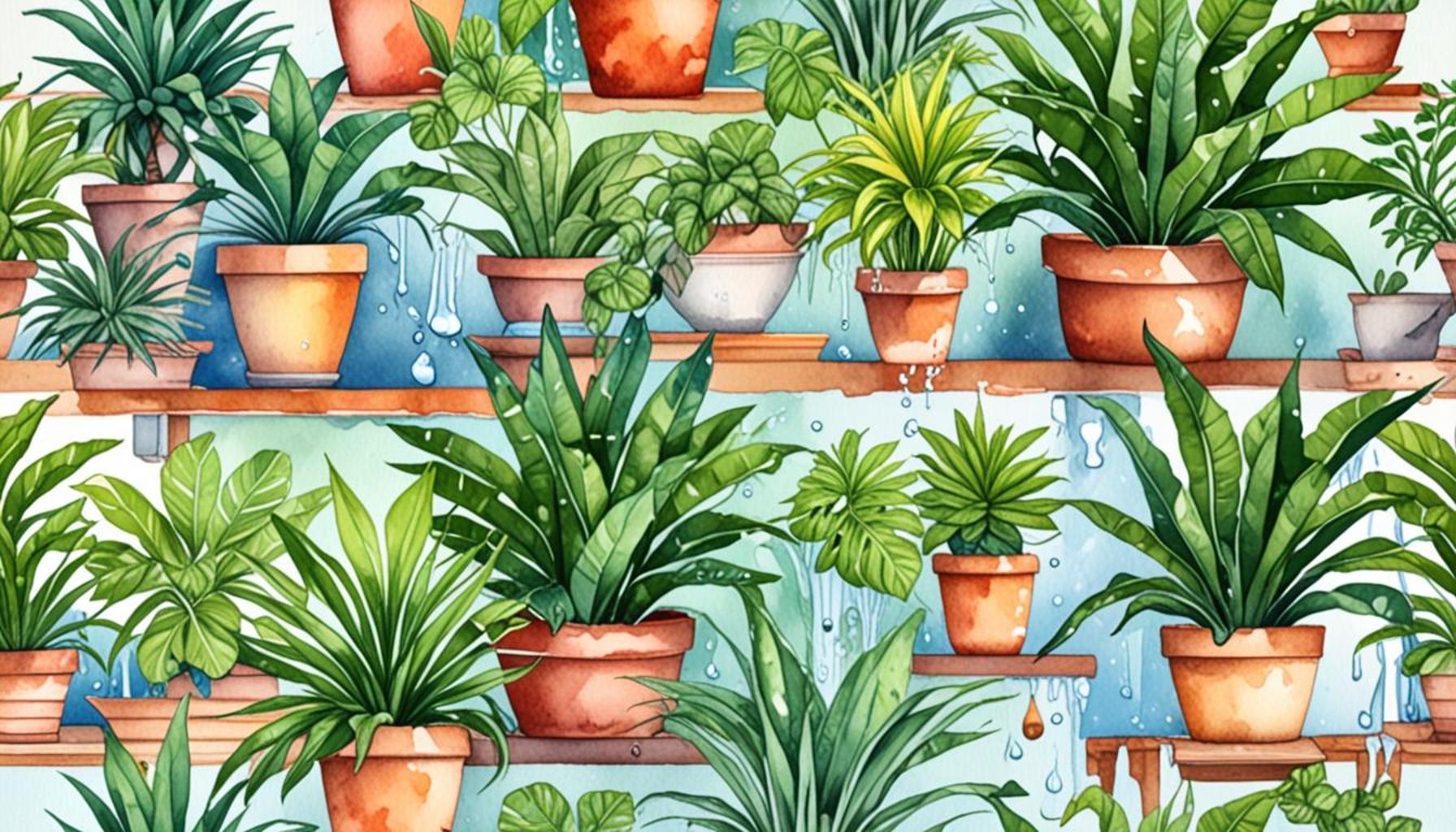Manual Irrigation Techniques: How to Make the Best Use of Watering Cans and Hoses
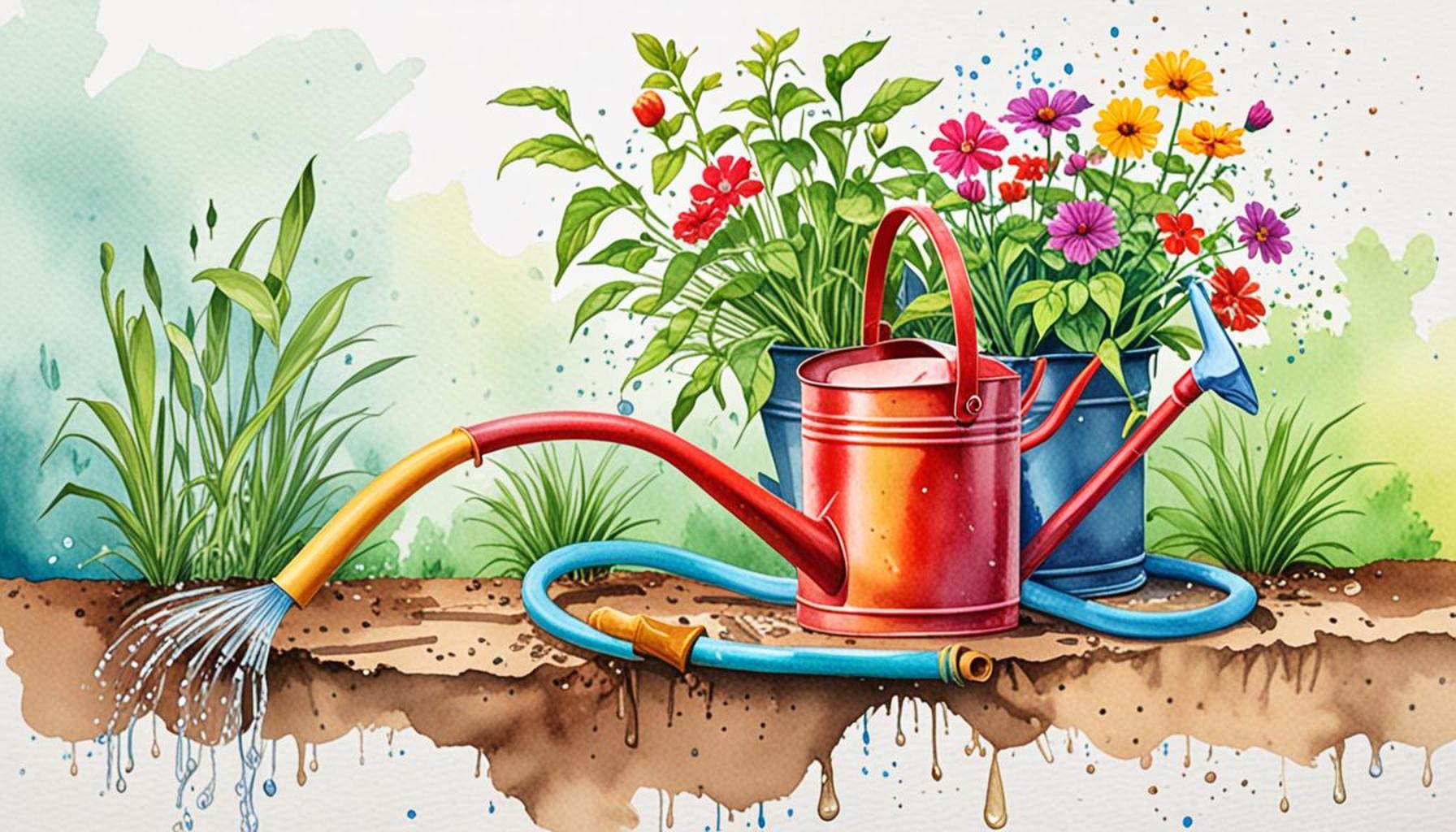
Understanding Manual Irrigation Techniques
A thriving garden is akin to a living canvas, where each plant contributes to a vibrant story. To nurture this ecosystem, hydration plays a crucial role. Employing the right manual irrigation techniques is not just about watering; it’s about ensuring every plant gets the precise amount of moisture it craves to flourish. This article delves deeper into the implementation of watering cans and hoses, equipping you with practical knowledge to transform your gardening experience.
The Importance of Manual Irrigation
While modern irrigation systems provide convenience, manual irrigation remains indispensable for several reasons. One primary advantage is the control it offers. Gardeners can easily determine how much water each plant receives, addressing specific needs based on their growth stage or exposure to sunlight. For instance, delicate seedlings may require gentle watering, while robust perennials can handle a thorough soak, highlighting the importance of tailored care.
Another significant benefit is targeting. By focusing your watering efforts, you can effectively minimize waste and prevent common problems such as waterlogging or mold growth. This focused approach not only conserves water but also encourages deep root growth, which is vital for plant health.
Moreover, for those gardening in areas without complex irrigation systems, manual methods offer great accessibility. Whether you’re tending to a balcony of potted herbs or a sprawling backyard garden, tools like watering cans and hoses ensure that watering remains a straightforward task.
The Tools: Watering Cans and Hoses
Among the myriad options available, watering cans and hoses are two of the most effective tools for manual irrigation. Watering cans, often made from lightweight plastic or metal, are ideal for smaller gardens or container plants. Their narrow spouts allow for precise watering, ensuring that moisture reaches the plant roots without soaking the surrounding soil. For example, when nurturing seedlings, a small watering can with a fine rose (the attachment that controls the flow of water) helps dispense water gently, avoiding any potential damage to fragile stems.
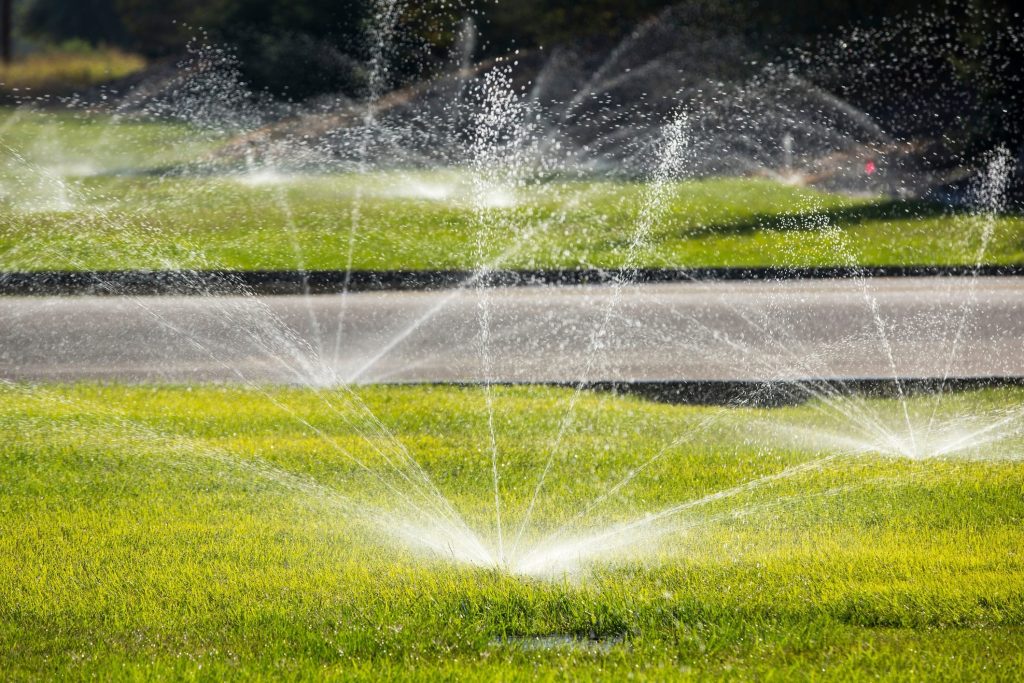
On the other hand, hoses prove invaluable for larger spaces where efficiency is key. A hose can quickly cover extensive areas, and many models now come with various attachments that allow gardeners to adjust both water flow and spray patterns. From gentle mists suited for delicate flowers to powerful jets that can tackle stubborn weeds, the versatility of hoses can make a significant difference in your watering routine.
Maximizing Your Watering Routine
As you refine your watering techniques, consider implementing a few essential strategies. First, time your watering during early mornings or late afternoons to reduce evaporation losses. Utilizing mulch around your plants can also help retain soil moisture, reducing the frequency of watering needed.
Incorporating these techniques not only enhances the efficiency of your garden care but also fosters a deeper connection to the plants you cultivate. By utilizing manual irrigation methods, you gain a hands-on understanding of your garden’s unique requirements, paving the way for growth that is both nutritious and vibrant.
In summary, manual irrigation remains a timeless skill that empowers gardeners. With the right tools and techniques, you can cultivate a flourishing garden, ensuring that each plant is well-hydrated and poised to thrive.
DISCOVER MORE: Click here for essential irrigation tips
Choosing the Right Tool for Your Garden
As you embark on your gardening journey, selecting the appropriate manual irrigation tool—whether a watering can or a hose—can significantly impact the health and vibrancy of your plants. Each option caters to specific needs, making it essential to understand their unique advantages.
Watering Cans: Precision in Your Hands
Watering cans are unparalleled when it comes to precision and control. Ideal for small gardens or container plants, these tools allow you to target individual plants with ease. The design typically features a handle for easy carrying and a spout that can be equipped with a rose, providing a gentle spray. This makes it particularly beneficial for delicate seedlings and young plants that require a softer touch.
- Capacity: Watering cans come in various sizes, from small 1-gallon options to larger 5-gallon varieties, allowing you to choose one that suits your watering needs.
- Material: Most cans are made from plastic or metal, each offering durability and resistance to UV damage, which is crucial for outdoor use.
- Ergonomics: Look for a can with a comfortable handle and balanced weight distribution to minimize fatigue during extended use.
When using a watering can, the angle at which you hold it can also affect how water reaches the soil. Tilting it slightly will promote flow, enabling you to water pots or raised beds without disturbing the surrounding soil too much.
Hoses: Versatility and Efficiency
In contrast, a hose is the go-to tool for larger gardens or landscapes where efficient watering is key. Modern hoses offer a variety of benefits, including adjustable nozzles that can switch between different spray patterns—ranging from a fine mist to a powerful jet stream—making it easier to cater to the watering requirements of diverse plants.
- Length: Hoses are available in various lengths, allowing you to reach every corner of your garden without hassle. Consider your garden layout when choosing the right length.
- Materials: Look for hoses made of reinforced rubber, which are less prone to kinking and bursting, ensuring longevity.
- Ease of Storage: Consider options such as collapsible hoses or hose reels for simpler storage, making maintenance more manageable.
To maximize efficiency, consider using a hose fitted with a timer. This allows you to schedule watering sessions, ensuring that your plants receive adequate moisture even during your busy days.
Both watering cans and hoses have roles that can complement each other. As you navigate through your gardening efforts, mastering the art of manual irrigation techniques with these tools can lead to a flourishing garden, rich in life and color. Each technique offers possibilities for enhancing both your gardening experience and the health of your plants, setting the stage for your next gardening project.
| Advantages | Detailed Insights |
|---|---|
| Water Conservation | Manual techniques allow for precise watering, reducing waste and ensuring that each plant receives just the right amount of moisture. |
| Cost-Effective | Using watering cans and hoses requires no electricity or advanced systems, making it a budget-friendly choice for homeowners and gardeners. |
| Healthier Plants | Hand watering encourages gardeners to observe their plants closely, identifying problems like pests or diseases early on for timely intervention. |
| Versatility | Watering cans and hoses can easily reach areas difficult for traditional irrigation, ensuring that every plant, regardless of size or shape, is properly cared for. |
The advantages of utilizing manual irrigation techniques are numerous, providing compelling reasons for gardeners to embrace this method. One of the most significant benefits is water conservation, as manual watering promotes targeted application, thereby minimizing excess runoff and evaporation. Moreover, these techniques are remarkably cost-effective, sparing users from high utility bills associated with automated systems.In addition, human attention during manual watering contributes to healthier plants. Gardeners tend to notice variances in their plants’ wellbeing, allowing for proactive care. With their inherent versatility, watering cans and hoses are adept at reaching varied terrains, granting even the tiniest plants ample moisture. By mastering the art of manual irrigation, one can cultivate a thriving garden while also managing resources responsibly.
DISCOVER MORE: Click here to learn about how temperature and humidity impact your plant watering
Mastering Watering Techniques
Once you have selected the best tools for your garden, the next step is mastering manual irrigation techniques that will optimize water usage and promote plant health. Proper watering practices can have a profound impact on the vitality of your garden, ensuring that each plant thrives regardless of size or type.
Watering Techniques with Watering Cans
When utilizing a watering can, a few techniques can enhance your irrigation practice:
- Deep Watering: Instead of applying a small amount of water frequently, consider deep watering your plants. This involves saturating the soil thoroughly so that moisture penetrates deeper, encouraging roots to grow downwards. Aim to water the base of the plant, allowing the water to gradually seep into the surrounding soil.
- Even Distribution: To achieve even distribution, practice a circular motion while watering. This method allows you to cover a larger area and ensures that no part of the soil is left dry. For container plants, be sure to water near the edges of the pot where roots extend.
- Timing Matters: The best time to water is early in the morning or late in the afternoon. During these hours, the temperature is cooler, reducing evaporation, and plants have time to absorb moisture before the heat of the day kicks in.
Efficient Use of Hoses
Hoses provide an unmatched level of convenience and flexibility, especially for larger gardens. Here are some strategies for optimal hose usage:
- Soaker Hoses: Incorporating soaker hoses into your irrigation routine can be a game-changer. These hoses release water slowly and steadily directly into the soil, minimizing evaporation and ensuring that water penetrates to the root zone.
- Adjustable Nozzles: Take advantage of the varying spray patterns offered by adjustable nozzles. For example, a gentle mist is ideal for newly seeded areas or young seedlings, while a stronger jet function works well for established plants or larger garden beds.
- Rotate and Move: Regularly change the position of your hose to prevent overwatering in one spot and allow even moisture distribution across your garden. Consider creating a watering schedule that allocates specific areas of the garden to different days, ensuring all plants get adequate attention.
Water Conservation Techniques
In today’s climate-conscious world, water conservation is more important than ever. Implementing some straightforward techniques can help you minimize water waste while maintaining a lush garden:
- Rainwater Collection: Invest in rain barrels to collect runoff from gutters. This sustainable practice not only conserves water but also provides natural irrigation for your garden.
- Mulching: Adding a layer of mulch around your plants helps retain moisture in the soil, reduces evaporation, and suppresses weeds that compete for water.
- Soil Testing: Performing a soil test can guide you in understanding your garden’s specific water needs. Healthy soil retains moisture better, reducing the frequency of watering.
By mastering these manual irrigation techniques with watering cans and hoses, you can create a customized and effective watering strategy. In turn, this elevates the health of your plants while promoting responsible water use, ensuring your garden not only survives but flourishes.
DIVE DEEPER: Click here to learn about the best harvesting techniques
Conclusion: Harnessing the Power of Manual Irrigation
In conclusion, the art of manual irrigation through the effective use of watering cans and hoses plays a vital role in ensuring the success of your gardening endeavors. By implementing proper techniques, you not only optimize the use of water but also promote healthier plants that are better equipped to thrive in varying conditions. Whether it’s through the meticulous deep watering with a watering can or the efficient layout of soaker hoses, these methods are essential for delivering moisture directly to the roots, minimizing waste, and fostering growth.
Moreover, as garden enthusiasts become increasingly aware of water conservation strategies, adopting such practices not only strengthens your plants’ ability to flourish but also contributes positively to the environment. Techniques like rainwater harvesting and mulching not only reduce your water footprint but also create a sustainable gardening ecosystem that benefits both you and your plants.
As you evolve your manual irrigation strategy, consider engaging with local gardening communities or resources to exchange tips and learn new techniques. By embracing a tailored approach to watering, you help ensure that your garden not only survives the test of time but also flourishes beautifully. The journey into effective manual irrigation awaits; equip yourself with knowledge, be patient, and watch as your garden transforms into a thriving paradise.
